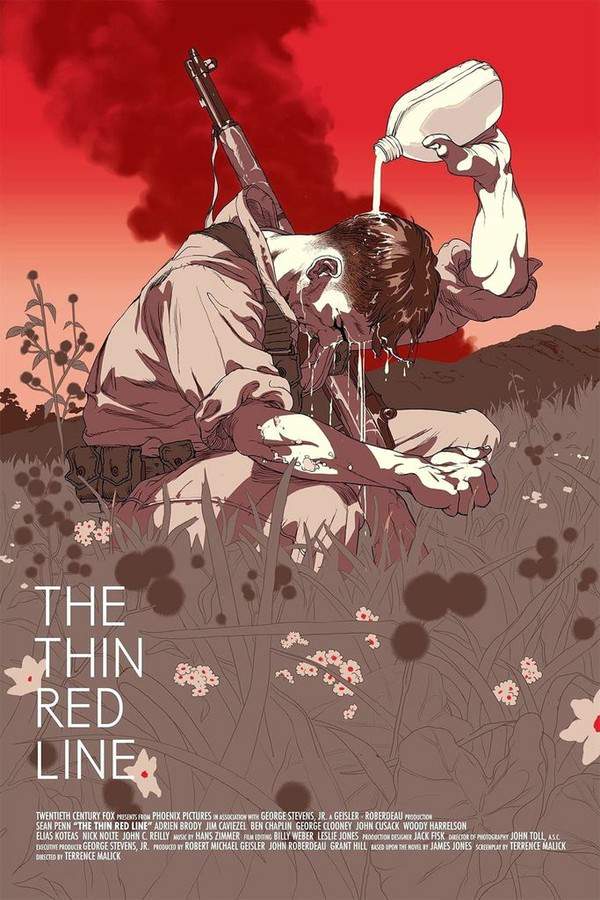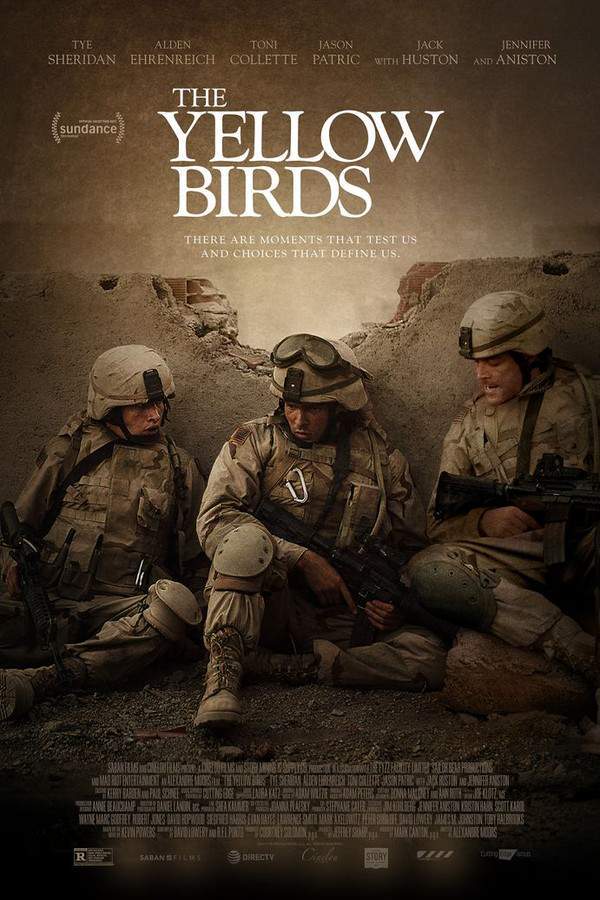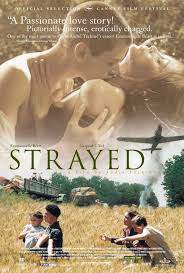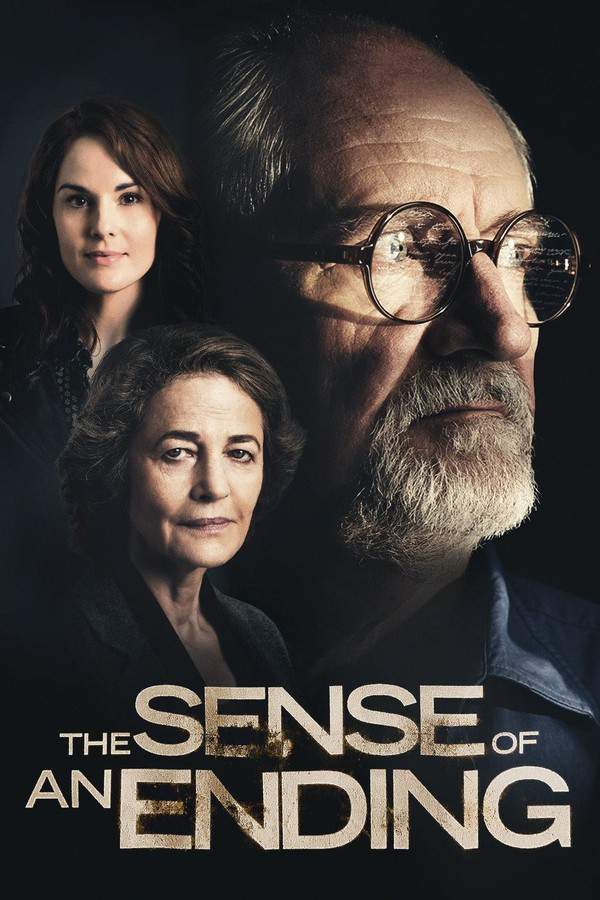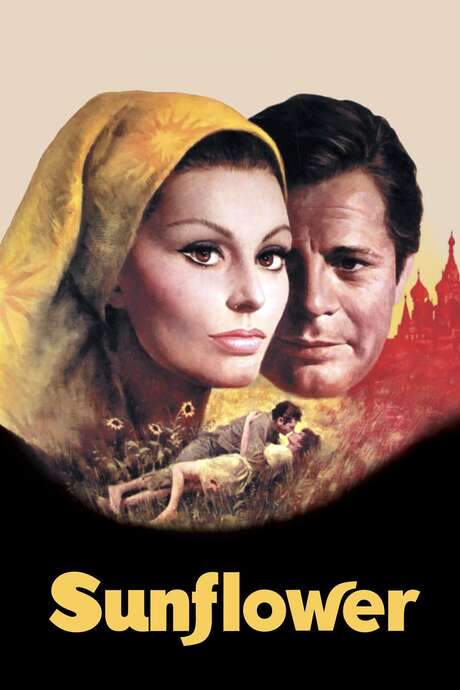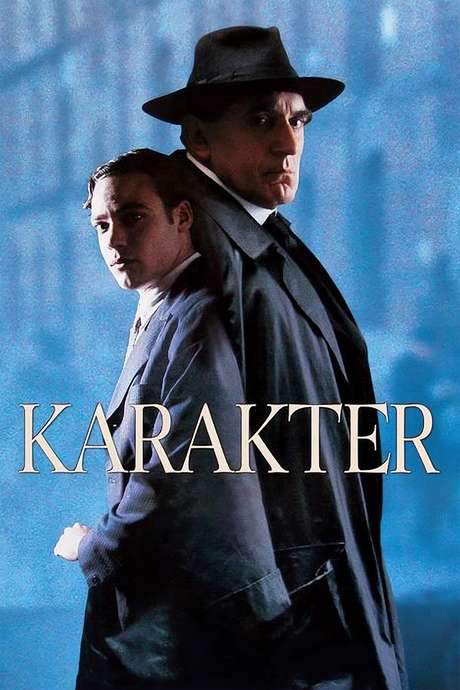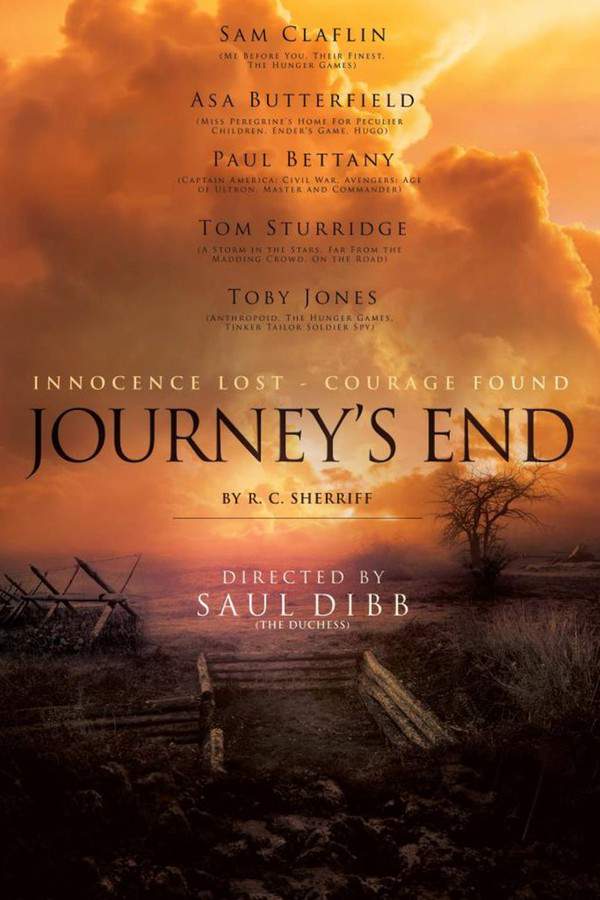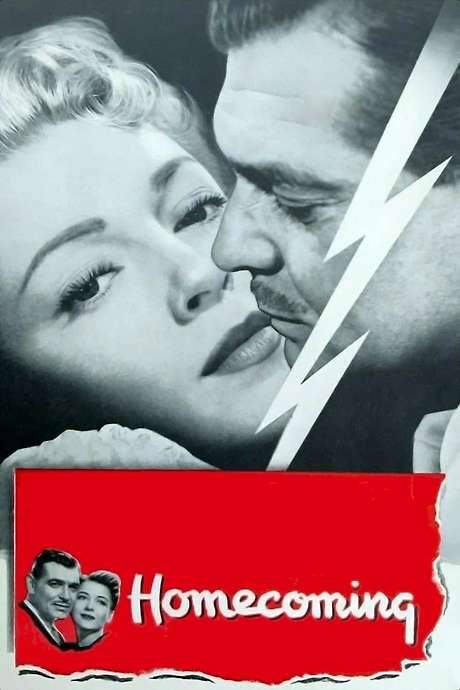
Regeneration
Year: 1997
Runtime: 114 mins
Language: English
Director: Gillies MacKinnon
Wilfred Owen and Siegfried Sassoon, two of England’s most celebrated World War I poets, are transferred with other battle‑scarred soldiers to a rest home where they confront the psychological fatigue and emotional trauma of fighting in no‑man’s‑land, navigating duty, destiny, loyalty and love. Doctors try to mend wounds, offering a faint hope.
Warning: spoilers below!
Haven’t seen Regeneration yet? This summary contains major spoilers. Bookmark the page, watch the movie, and come back for the full breakdown. If you're ready, scroll on and relive the story!
Regeneration (1997) – Full Plot Summary & Ending Explained
Read the complete plot breakdown of Regeneration (1997), including all key story events, major twists, and the ending explained in detail. Discover what really happened—and what it all means.
The opening scene unfolds with Siegfried Sassoon [James Wilby], a celebrated poet-war hero, issuing a blistering open letter in July 1917—Finished with the War: A Soldier’s Declaration—that rails against the political errors and insincerities for which the fighting men are paying the price. Published in The Times, the letter draws sharp attention to Sassoon’s moral stand, even as it jeopardizes his military standing. With the support and influence of Robert Graves [David Hayman] (a fellow poet and friend who helps steer Sassoon through the system), the army chooses a path of expedient care rather than a court-martial. Sassoon is sent to Craiglockhart War Hospital, a psychiatric facility designed to treat officers, rather than to the frontlines. There, the atmosphere is clinical yet humane, and Sassoon is introduced to Dr Rivers [Jonathan Pryce], a Freudian psychologist who believes that the most effective therapy lies in giving patients a voice to recount and reframe their war memories.
The film refuses to center exclusively on a single protagonist, instead weaving together the interconnected stories of Dr Rivers and his patients, with Wilfred Owen [Stuart Bunce] appearing as a gifted but anxious figure who becomes an ally and inspiration to Sassoon. The narrative threads alternate between the talking cure of trauma and the personal costs borne by those who bear the wounds of war. Among the key figures is Billy Prior [Jonny Lee Miller], a young officer whose initial cold pragmatism and class-defying ascent from the lower ranks set him apart from his peers. Rivers must uncover the kernel of Prior’s blindness or mutism, and the doctor’s patient care gradually reveals more than just the surface causes of his speechlessness. When Prior’s voice returns, it opens a window into a past scar—one that compels him to seek affection and companionship, especially with Sarah [Tanya Allen], a munitions worker who becomes his confidante and lover. Prior’s social background—being a working-class man who achieved officer status—adds another layer to his struggle, as he contends with a hierarchy that has often undervalued the men he is compelled to lead.
A pivotal moment comes when the film shows Prior’s trauma surface: the death of a fellow soldier, killed by a bomb, that leaves him speechless and haunted. He confronts the disturbing memory of picking up a private’s eyeball and asking what should be done with “this gobstopper,” a detail that shocks him with the real price of war. This revelation shatters his assumptions about self-blame and duty, forcing him to confront the pressure to return to front-line duty in order to prove his competence to himself and to the system that thrust him into leadership. The patient’s inner conflict—between duty, fear, and a craving for normalcy—drives his evolving relationship with Rivers as the two search for a path back to wholeness.
Meanwhile, Sassoon forms a burgeoning friendship with Owen, who longs to become a poet and respects Sassoon’s body of work. Sassoon agrees to help Owen refine his poetry, and a mutual respect grows between the two writers as they navigate the shared trauma of the trenches and the fragile space of the hospital. The film captures the tenderness of their exchanges, as Sassoon’s experience provides a canvas for Owen’s own aspiring voice to emerge. This bond is a quiet counterpoint to the harsher realities of the war outside the ward walls.
Rivers’ own mental health begins to show strain as he absorbs the burdens of his patients while also contending with the toll of hearing, witnessing, and translating their pain. To piece together a harder-edged science with compassionate care, Rivers travels to London to observe the methods of Dr Yealland [John Neville], who treats mutism and trauma with brutal efficiency. Yealland’s electric stimulation therapy—an brutal regimen that commands a private patient to endure electric currents applied to the mouth to “stimulate” speech—shocks Rivers with its mechanistic brutality and lack of empathy. The encounter exposes a stark contrast between the two approaches: Yealland’s cold, workmanlike success versus Rivers’ belief in the human need to articulate, remember, and heal at a human pace. Rivers returns to Craiglockhart shaken but determined, and he continues to pursue his approach, even as Sassoon’s stubborn insistence on staying true to his beliefs pushes Rivers toward a delicate balance between medical science and moral conviction. The line that captures Sassoon’s view of Rivers’ work—his insistence on the “gentle miracles” that come from patient-centered care—resonates through the clinic as a guiding principle, even as it costs Rivers personal stability. >gentle miracles
As the Waterford-like canal of memory and dream becomes a recurring motif, Sassoon eventually decides to return to France to care for his men, even as the institution weighs his fitness for continued service. During a Review Board evaluation, Rivers is surprised by Sassoon’s unwavering stance that he has not truly altered his mind about the war; yet the formal assessment ultimately deems him fit to resume duty, underscoring the tension between moral conviction and clinical validation. Sassoon’s injuries are hinted at in the aftermath of his return, and a quiet moment of laughter amid fear underscores his enduring grit in the face of danger. The evolving portrait of Sassoon reveals a man who cannot fully reconcile his beliefs with the demands of the battlefield, even as he remains determined to stand with his soldiers.
Meanwhile, Prior faces his own Board review and is assigned to home duties—likely due to asthma and ongoing questions about whether his mind and body can sustain active service. The final chapters bring the two men’ stories toward a poignant close: Prior is shown in bed with Sarah, suggesting a fragile but hopeful personal future away from frontline pressures. The film does not pretend the scars are easily erased; instead, it underscores the slow and arduous path to healing that war imposes on those who survive.
The closing sequences shift to the broader, more tragic canvas of Wilfred Owen’s fate and Rivers’ sorrow. The somber image of Owen’s corpse in a French waterway marks the war’s brutal endgame and casts a long shadow over Rivers, who reads Owen’s poignant poem The Parable of the Old Man and the Young, as Sassoon’s influence lingers in the air. The canal tunnel motif—once a private dream of Owen’s—gains final significance as a symbol of a path through memory toward some form of reckoning. The film leaves the audience with a sense of quiet sadness, complexity, and resilience: a portrait of men wounded by war who seek a language to tell their truth, a doctor who learns to listen more deeply, and a generation of poets who bear witness to both the beauty and the brutality of life in the trenches.
Last Updated: October 05, 2025 at 12:39
Explore Movie Threads
Discover curated groups of movies connected by mood, themes, and story style. Browse collections built around emotion, atmosphere, and narrative focus to easily find films that match what you feel like watching right now.
Movies about the psychological trauma of war like Regeneration
Movies that explore the deep psychological wounds inflicted by combat.If you were moved by Regeneration's unflinching look at shell shock, explore more movies like it that focus on the psychological scars of war. These similar films examine PTSD, military psychiatry, and the heavy emotional toll on soldiers, offering thoughtful and harrowing dramas.
Narrative Summary
Stories in this thread typically follow characters, often soldiers or veterans, as they grapple with severe psychological trauma from their wartime experiences. The narrative revolves around their attempts to heal, confront their memories, and find a way to live with their invisible wounds, often through therapy or supportive relationships.
Why These Movies?
These movies are grouped together because they share a primary focus on the internal, psychological impact of war rather than just its external battles. They create a similar experience through their heavy emotional weight, melancholic tone, and thoughtful examination of trauma, morality, and recovery.
Slow-burn melancholic character studies like Regeneration
Character-driven stories steeped in a quiet, reflective sadness.For viewers who appreciated the slow, thoughtful pace and melancholic depth of Regeneration, this selection features similar character-driven dramas. These movies like Regeneration share a heavy emotional tone, a focus on psychological realism, and a bittersweet sensibility that lingers long after the credits.
Narrative Summary
The narrative pattern is centered on the gradual unraveling of a character's psyche or the evolution of their emotional state. There is minimal external action; the drama comes from internal conflict, memory, and dialogue. The journey is often one of coming to terms with a painful reality rather than achieving a clear victory.
Why These Movies?
These films are connected by their shared atmospheric and structural qualities: a slow pacing that encourages reflection, a dominantly melancholic tone, and a primary focus on the nuanced emotional journeys of their characters. They provide a similarly immersive and emotionally resonant viewing experience.
Unlock the Full Story of Regeneration
Don't stop at just watching — explore Regeneration in full detail. From the complete plot summary and scene-by-scene timeline to character breakdowns, thematic analysis, and a deep dive into the ending — every page helps you truly understand what Regeneration is all about. Plus, discover what's next after the movie.
Regeneration Timeline
Track the full timeline of Regeneration with every major event arranged chronologically. Perfect for decoding non-linear storytelling, flashbacks, or parallel narratives with a clear scene-by-scene breakdown.

Characters, Settings & Themes in Regeneration
Discover the characters, locations, and core themes that shape Regeneration. Get insights into symbolic elements, setting significance, and deeper narrative meaning — ideal for thematic analysis and movie breakdowns.

Regeneration Spoiler-Free Summary
Get a quick, spoiler-free overview of Regeneration that covers the main plot points and key details without revealing any major twists or spoilers. Perfect for those who want to know what to expect before diving in.

More About Regeneration
Visit What's After the Movie to explore more about Regeneration: box office results, cast and crew info, production details, post-credit scenes, and external links — all in one place for movie fans and researchers.

Similar Movies to Regeneration
Discover movies like Regeneration that share similar genres, themes, and storytelling elements. Whether you’re drawn to the atmosphere, character arcs, or plot structure, these curated recommendations will help you explore more films you’ll love.
Explore More About Movie Regeneration
Regeneration (1997) Scene-by-Scene Movie Timeline
Regeneration (1997) Movie Characters, Themes & Settings
Regeneration (1997) Spoiler-Free Summary & Key Flow
Movies Like Regeneration – Similar Titles You’ll Enjoy
Journey's End (2018) Full Movie Breakdown
Private Peaceful (2014) Spoiler-Packed Plot Recap
War Requiem (1989) Plot Summary & Ending Explained
Went the Day Well? (1942) Ending Explained & Film Insights
Immortal Sergeant (1943) Movie Recap & Themes
Hospital of the Transfiguration (1979) Full Summary & Key Details
The Hasty Heart (1949) Complete Plot Breakdown
War Nurse (1930) Full Movie Breakdown
Westfront 1918 (1930) Full Summary & Key Details
Tunes of Glory (1960) Full Summary & Key Details
All Quiet on the Western Front (1979) Spoiler-Packed Plot Recap
Three Comrades (1938) Film Overview & Timeline
Homecoming (1948) Movie Recap & Themes
Pride of the Marines (1945) Story Summary & Characters
The White Cliffs of Dover (1944) Ending Explained & Film Insights

